Hybrid Effect Evaluation of Steel Fiber and Carbon Fiber on the Performance of the Fiber Reinforced Concrete
Abstract
:1. Introduction
2. Objective
3. Experimental Program
3.1. Materials
- Cement: P.O 42.5 cement was selected, P.O 42.5 means ordinary portland cement and the 28-day cement mortar strength is 42.5 MPa when the water-cement ratio is 0.45. The chemical components of the cement is shown in Table 1.
- Aggregate: gravel aggregate with the nominal maximum aggregate size (NMAS) 19.5 mm.
- Sand: rive sand with the fineness modulus 2.78, the aggregate gradation of the coarse aggregate and sand can be seen in Figure 1.
- The chemical components of the fly ash is shown in Table 1.
- Water reducer: polycarboxylic high efficiency water reducer.
3.2. Mixing and Curing
3.3. Concrete Mix Design
3.4. Uniaxial Compression Test
3.5. Impact Test
4. Results
4.1. Compression Test
4.2. Impact Test
4.3. Relationship between Compression Toughness and Impact Toughness
5. Conclusions
- Compressive toughness of SFRC, CFRC and HFRC were evaluated, SF and CF can significantly increase the compression toughness of concrete.
- Impact toughness of SFRC, CFRC and HFRC were explored, the toughness before the first crack and the final toughness were both increased considerably. The improvement of toughness mainly lay in improving the crack resistance after the first crack.
- Analysis of the hybrid effect of steel fiber and carbon fiber in compressive toughness and impact toughness showed there was a positive hybrid effect, and SF1.0-CF0.1 showed the best performance.
- The hybridization of steel fiber and carbon fiber could enhance the concrete performance in macro-crack bridging and micro-crack delaying.
- A logarithmic relationship existed between the compressive toughness and the impact toughness.
Acknowledgments
Author Contributions
Conflicts of Interest
References
- Monteiro, P. Concrete: Microstructure, Properties, and Materials; McGraw-Hill Publishing: New York, NY, USA, 2006. [Google Scholar]
- Zollo, R.F. Fiber-reinforced concrete: An overview after 30 years of development. Cem. Concr. Compos. 1997, 19, 107–122. [Google Scholar] [CrossRef]
- Brandt, A.M. Fibre reinforced cement-based (FRC) composites after over 40 years of development in building and civil engineering. Compos. Struct. 2008, 86, 3–9. [Google Scholar] [CrossRef]
- Banthia, N.; Sappakittipakorn, M. Toughness enhancement in steel fiber reinforced concrete through fiber hybridization. Cem. Concr. Res. 2007, 37, 1366–1372. [Google Scholar] [CrossRef]
- Chen, B.; Liu, J. Contribution of hybrid fibers on the properties of the high-strength lightweight concrete having good workability. Cem. Concr. Res. 2005, 35, 913–917. [Google Scholar] [CrossRef]
- Hughes, B.; Fattuhi, N. The workability of steel-fibre-reinforced concrete. Mag. Concr. Res 1976, 28, 157–161. [Google Scholar] [CrossRef]
- Groth, P.; Nemegeer, D. The use of steel fibres in self-compacting concrete. In Proceedings of the International RILEM Symposium on Self-Compacting Concrete, Stockholm, Sweden, 13 September 1999; pp. 497–507.
- Groth, P. Fibre Reinforced Concrete-Fracture Mechanics Methods Applied on Self-Compacting Concrete and Energetically Modified Binders. Ph.D. Thesis, Luleå University of Technology, Luleå, Sweden, 13 January 2000. [Google Scholar]
- Bartos, P.; Hoy, C. Interaction of particles in fibre reinforced concrete. In Production Methods and Workability of Concrete; CRC Press: Boca Raton, FL, USA, 2004; Chapter 39; Volume 32, p. 451. [Google Scholar]
- Boulekbache, B.; Hamrat, M.; Chemrouk, M.; Amziane, S. Flowability of fibre-reinforced concrete and its effect on the mechanical properties of the material. Constr. Build. Mater. 2010, 24, 1664–1671. [Google Scholar] [CrossRef]
- Soroushian, P.; Lee, C.D. Distribution and orientation of fibers in steel fiber reinforced concrete. Mater. J. 1990, 87, 433–439. [Google Scholar]
- Choi, O.; Lee, C. Flexural performance of ring-type steel fiber-reinforced concrete. Cem. Concr. Res. 2003, 33, 841–849. [Google Scholar] [CrossRef]
- Sivakumar, A.; Santhanam, M. Mechanical properties of high strength concrete reinforced with metallic and non-metallic fibres. Cem. Concr. Compos. 2007, 29, 603–608. [Google Scholar] [CrossRef]
- Song, P.; Hwang, S.; Sheu, B. Strength properties of nylon-and polypropylene-fiber-reinforced concretes. Cem. Concr. Res. 2005, 35, 1546–1550. [Google Scholar] [CrossRef]
- Jamsawang, P.; Voottipruex, P.; Horpibulsuk, S. Flexural strength characteristics of compacted cement-polypropylene fiber sand. J. Mater. Civ. Eng. 2014, 27, 04014243. [Google Scholar] [CrossRef]
- Song, P.; Hwang, S. Mechanical properties of high-strength steel fiber-reinforced concrete. Constr. Build. Mater. 2004, 18, 669–673. [Google Scholar] [CrossRef]
- Gao, J.; Sun, W.; Morino, K. Mechanical properties of steel fiber-reinforced, high-strength, lightweight concrete. Cem. Concr. Compos. 1997, 19, 307–313. [Google Scholar] [CrossRef]
- Alhozaimy, A.; Soroushian, P.; Mirza, F. Mechanical properties of polypropylene fiber reinforced concrete and the effects of pozzolanic materials. Cem. Concr. Compos. 1996, 18, 85–92. [Google Scholar] [CrossRef]
- Hsu, L.S.; Hsu, C.T. Stress-strain behavior of steel-fiber high-strength concrete under compression. Struct. J. 1994, 91, 448–457. [Google Scholar]
- Taerwe, L.R. Influence of steel fibers on strain-softening of high-strength concrete. ACI Mater. J. 1992, 89, 54–60. [Google Scholar]
- Ezeldin, A.S.; Balaguru, P.N. Normal-and high-strength fiber-reinforced concrete under compression. J. Mater. Civ. Eng. 1992, 4, 415–429. [Google Scholar] [CrossRef]
- Nataraja, M.; Dhang, N.; Gupta, A. Stress-strain curves for steel-fiber reinforced concrete under compression. Cem. Concr. Compos. 1999, 21, 383–390. [Google Scholar] [CrossRef]
- Fanella, D.A.; Naaman, A.E. Stress-strain properties of fiber reinforced mortar in compression. ACI J. 1985, 82, 475–483. [Google Scholar]
- Ramesh, K.; Seshu, D.; Prabhakar, M. Constitutive behaviour of confined fibre reinforced concrete under axial compression. Cem. Concr. Compos. 2003, 25, 343–350. [Google Scholar] [CrossRef]
- Li, Y.F.; Lin, C.T.; Sung, Y.Y. A constitutive model for concrete confined with carbon fiber reinforced plastics. Mech. Mater. 2003, 35, 603–619. [Google Scholar] [CrossRef]
- Nia, A.A.; Hedayatian, M.; Nili, M.; Sabet, V.A. An experimental and numerical study on how steel and polypropylene fibers affect the impact resistance in fiber-reinforced concrete. Int. J. Impact Eng. 2012, 46, 62–73. [Google Scholar]
- Shu, X.; Graham, R.K.; Huang, B.; Burdette, E.G. Hybrid effects of carbon fibers on mechanical properties of Portland cement mortar. Mater. Des. 2015, 65, 1222–1228. [Google Scholar] [CrossRef]
- Hsie, M.; Tu, C.; Song, P. Mechanical properties of polypropylene hybrid fiber-reinforced concrete. Mater. Sci. Eng. A 2008, 494, 153–157. [Google Scholar] [CrossRef]
- Aydin, A.C. Self compactability of high volume hybrid fiber reinforced concrete. Constr. Build. Mater. 2007, 21, 1149–1154. [Google Scholar] [CrossRef]
- Ahmed, S.F.U.; Maalej, M.; Paramasivam, P. Flexural responses of hybrid steel-polyethylene fiber reinforced cement composites containing high volume fly ash. Constr. Build. Mater. 2007, 21, 1088–1097. [Google Scholar] [CrossRef]
- Yap, S.P.; Bu, C.H.; Alengaram, U.J.; Mo, K.H.; Jumaat, M.Z. Flexural toughness characteristics of steel-polypropylene hybrid fibre-reinforced oil palm shell concrete. Mater. Des. 2014, 57, 652–659. [Google Scholar] [CrossRef]
- Ahmad, S.H.; Arockiasamy, M.; Balaguru, P.N.; Ball, C.G.; Ball, H.P., Jr.; Batson, G.B.; Bentur, A.; Craig, R.J.; Criswell, M.E.; Freedman, S.; et al. Measurement of Properties of Fiber Reinforced Concrete; American Concrete Institute: Farmington Hills, MI, USA, 1983. [Google Scholar]
- Wang, P.; Huang, Z.; Zhou, D.; Wang, X.D.; Zhang, C. Impact mechanical properties of concrete reinforced with hybrid carbon fibers. J. Vib. Shock 2012, 31, 14. [Google Scholar]
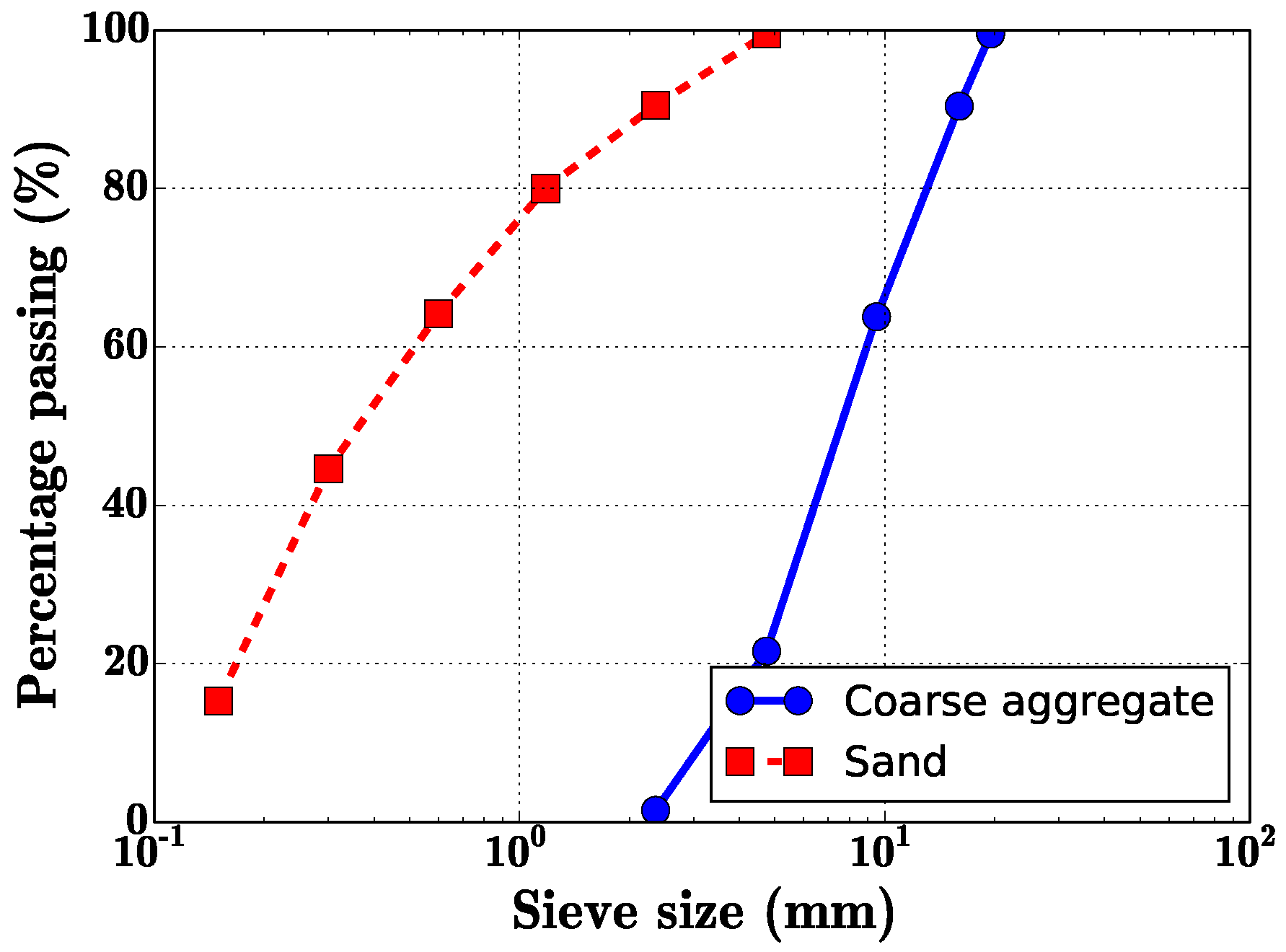
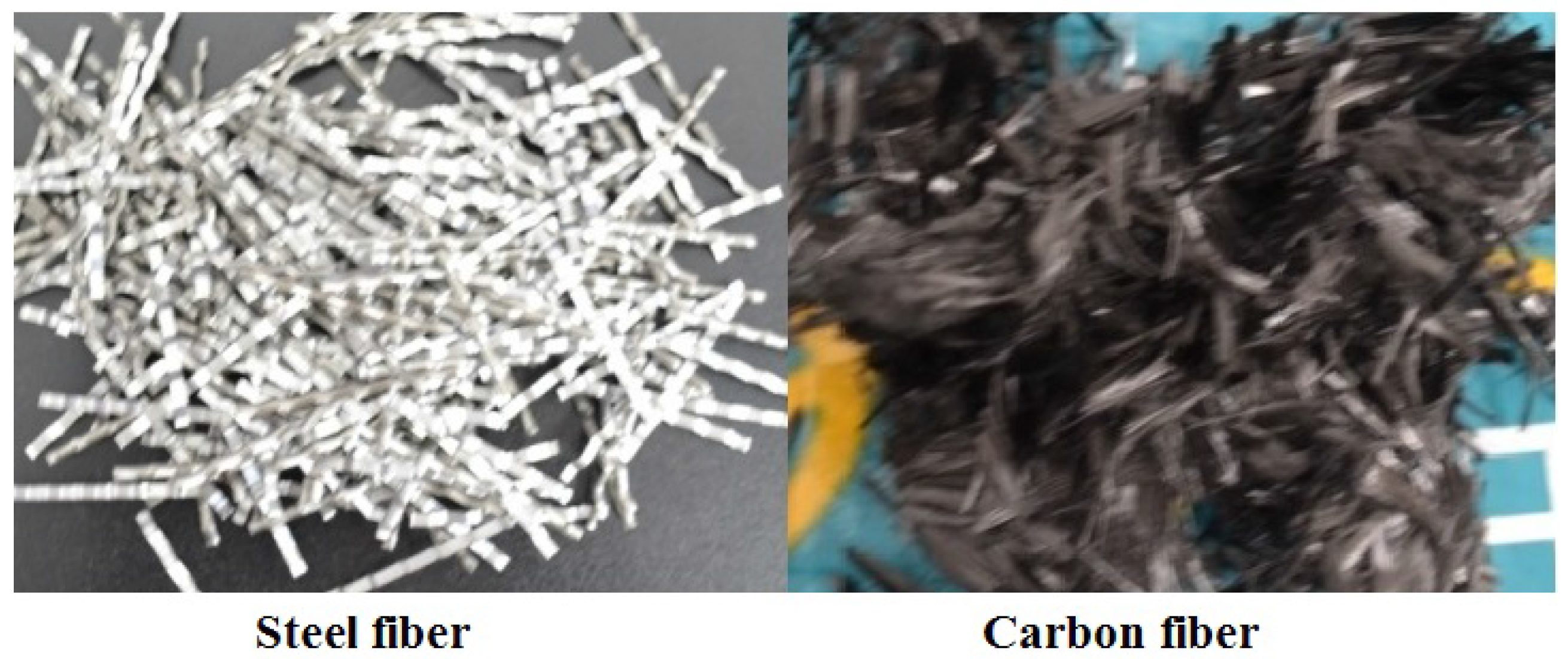
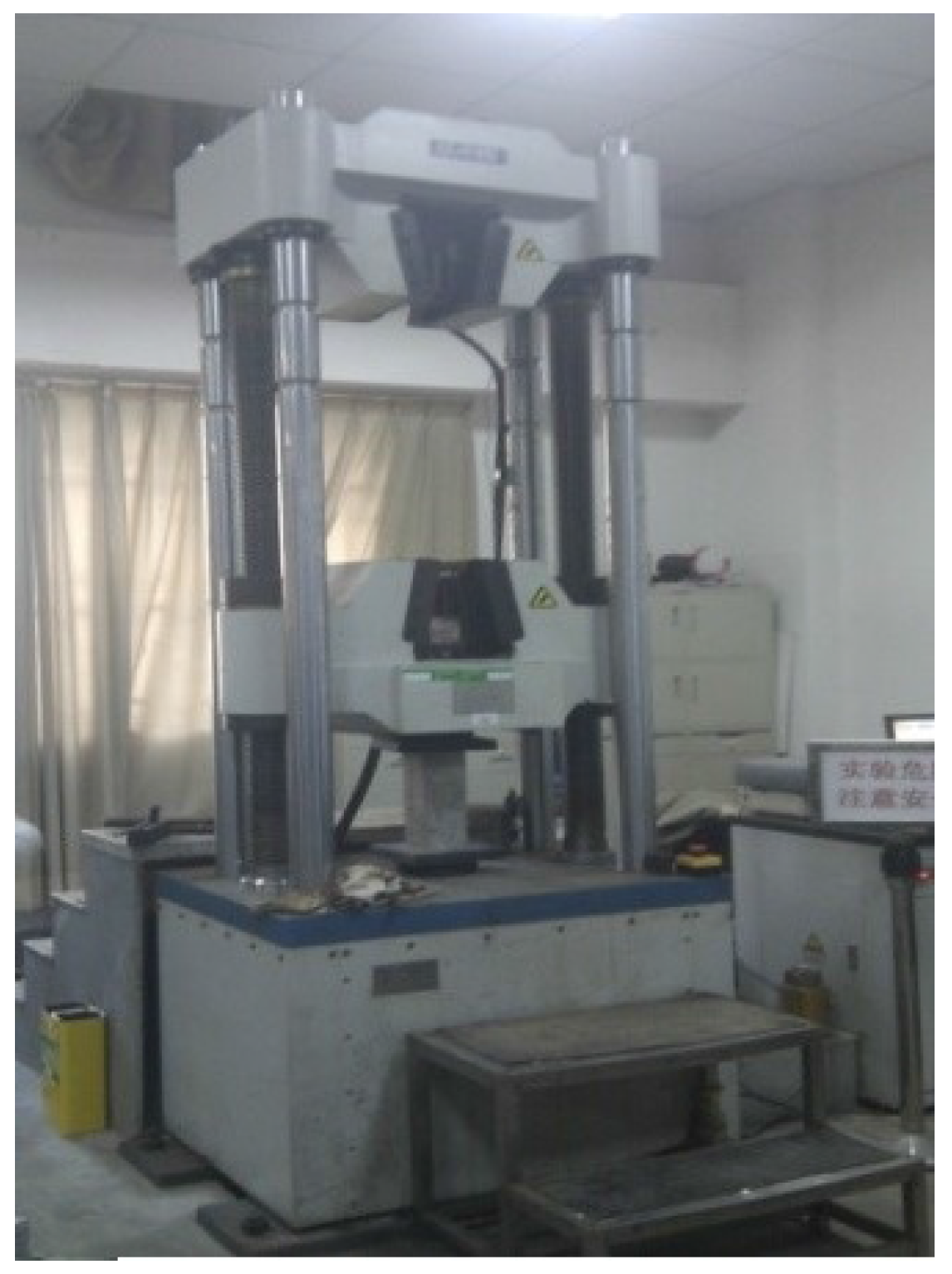
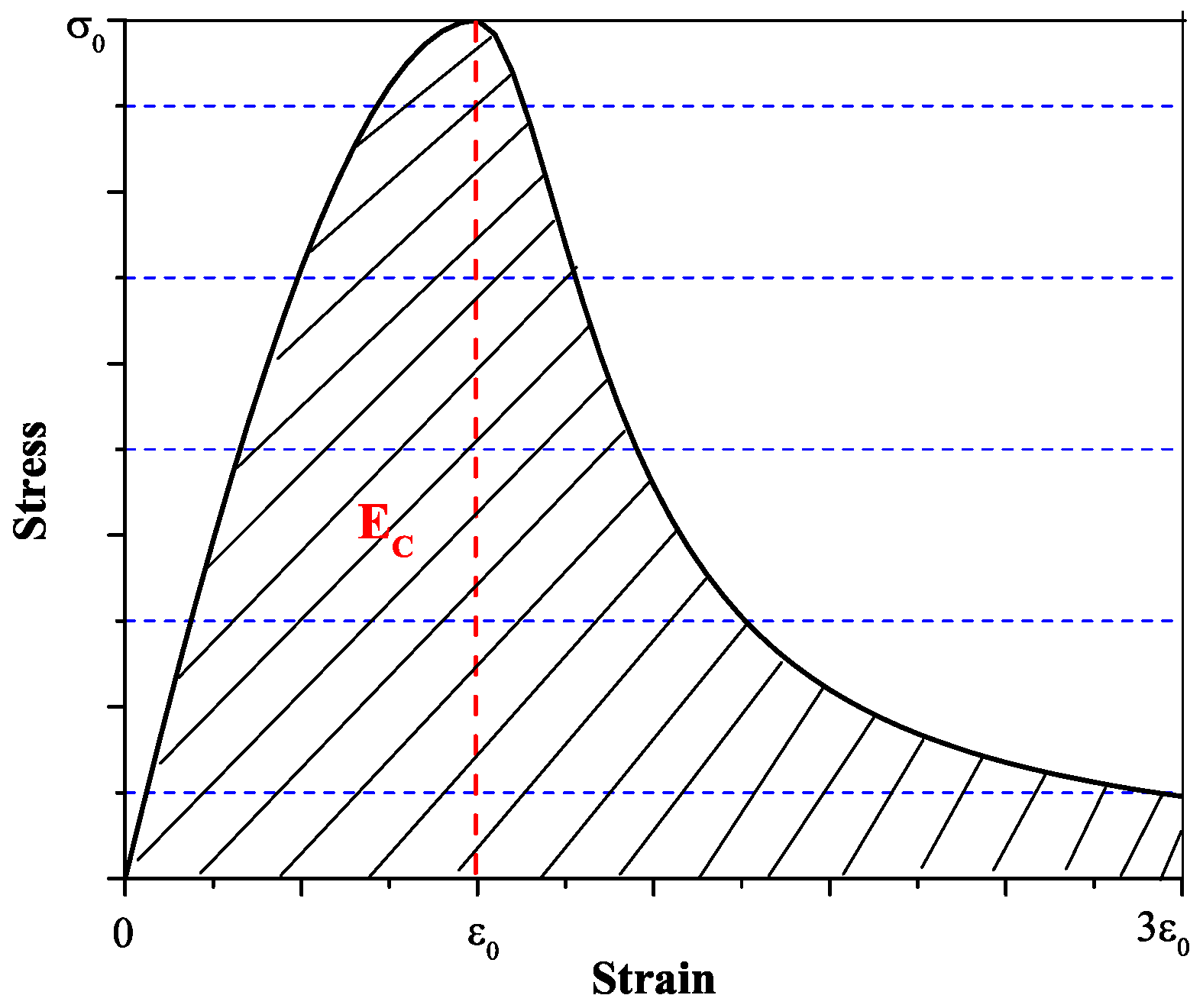
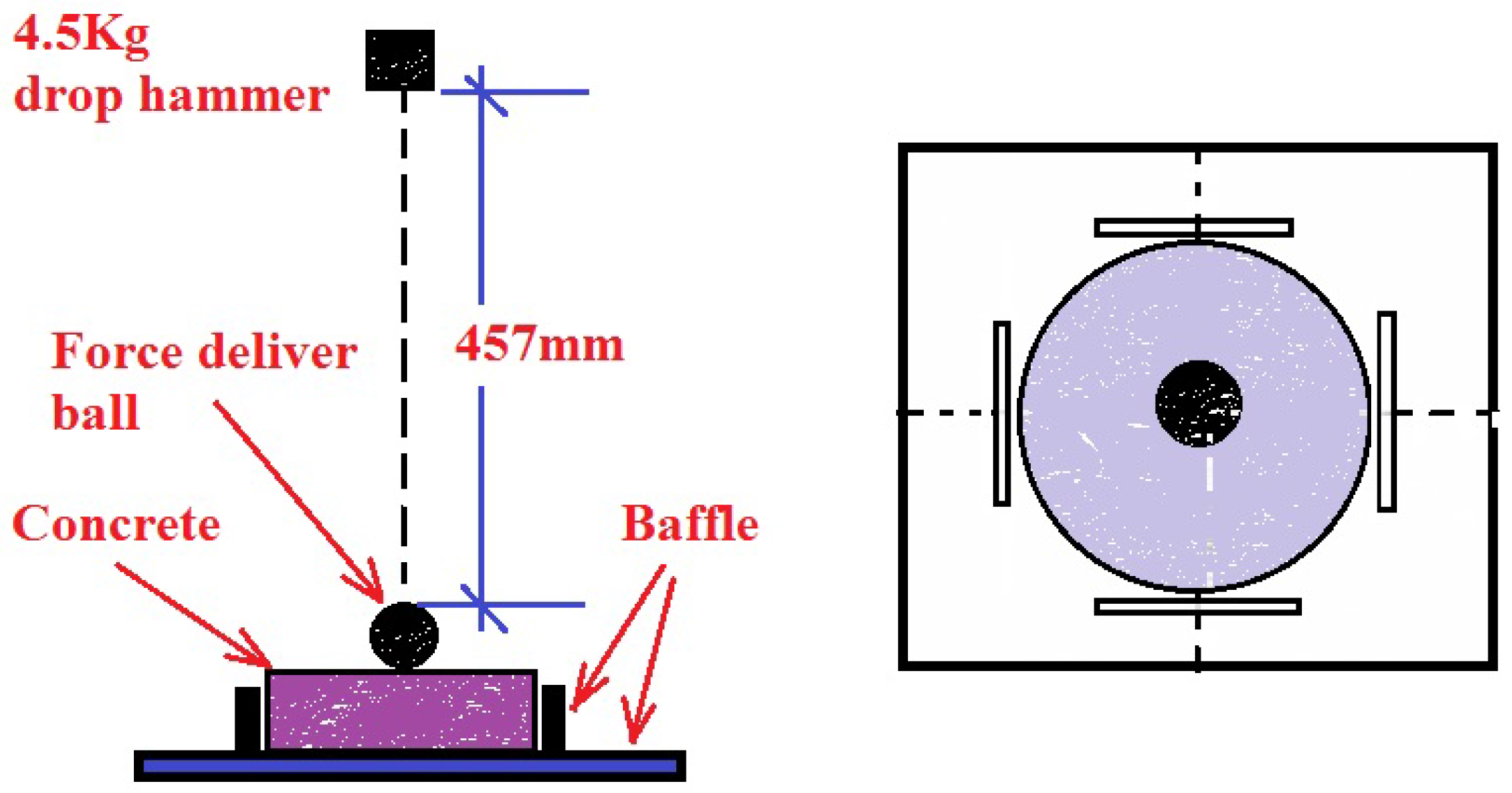
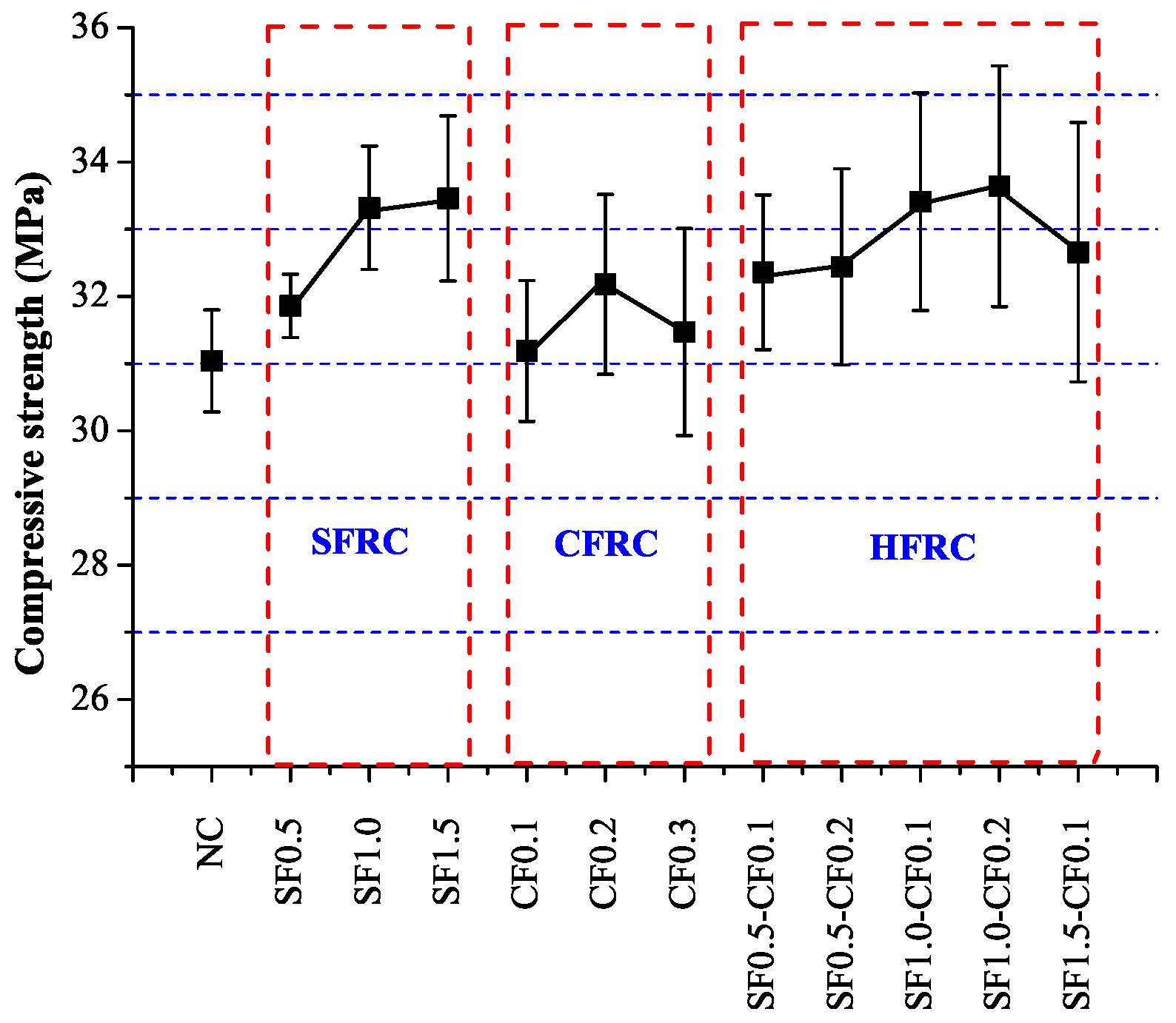


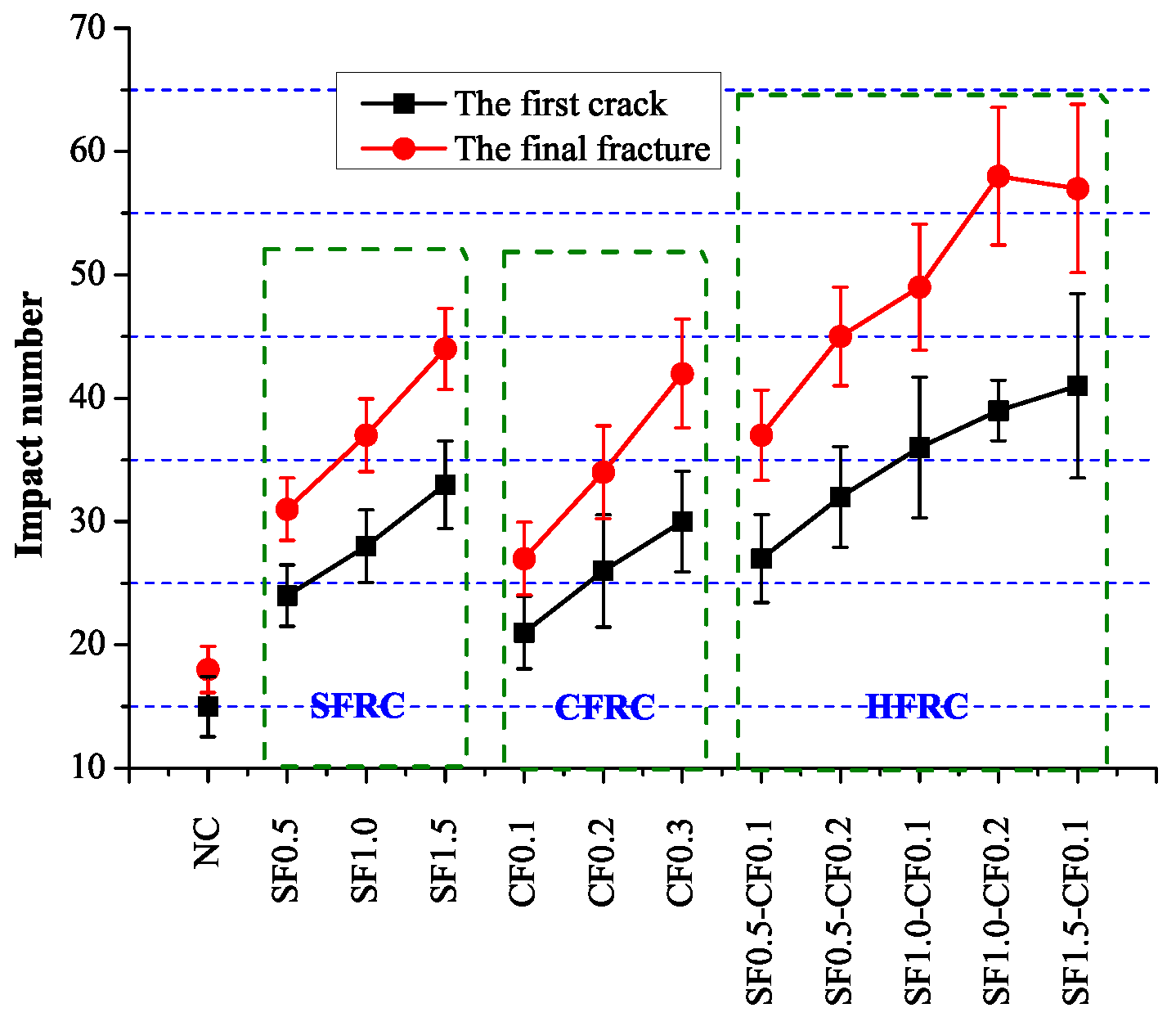
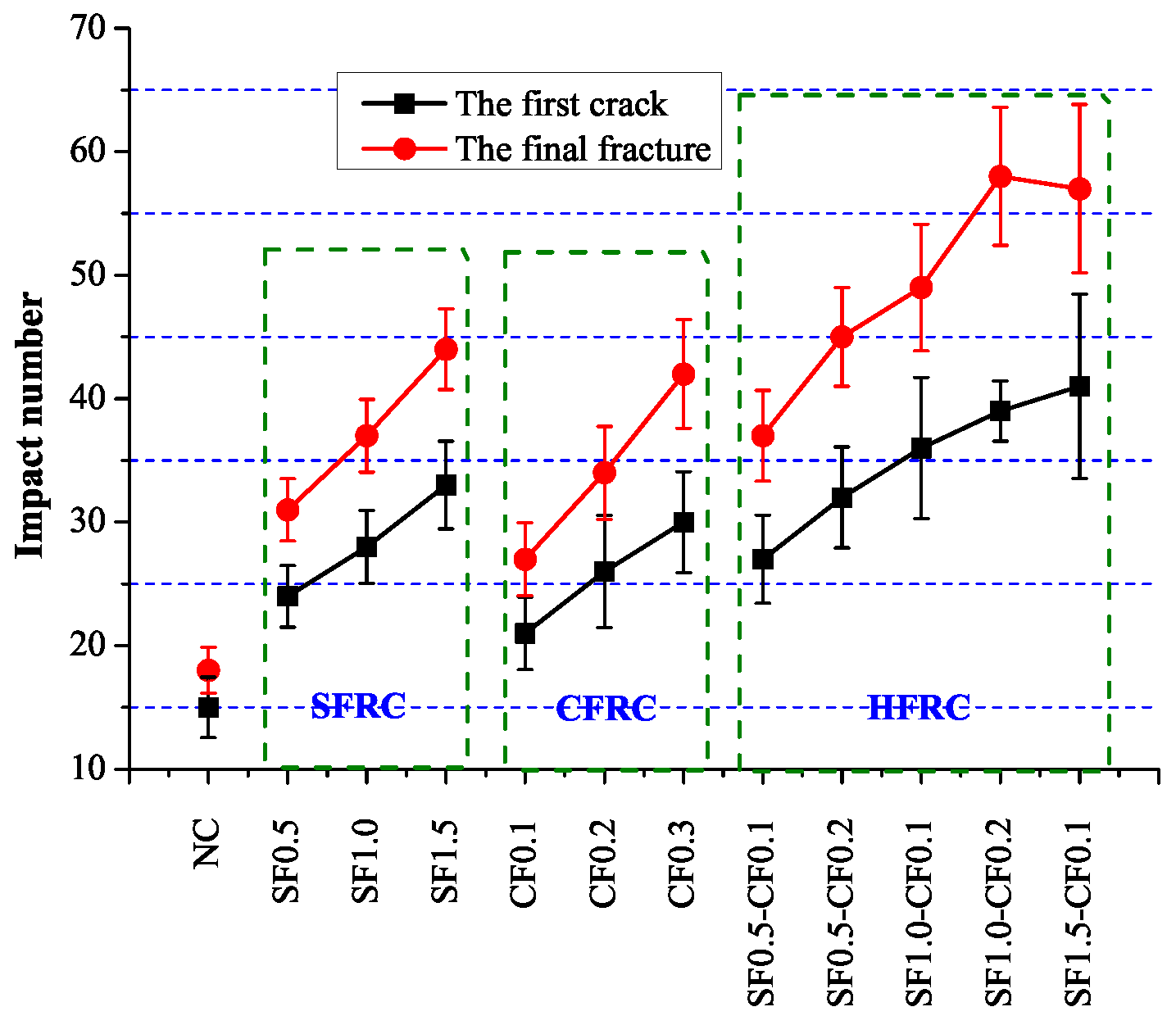
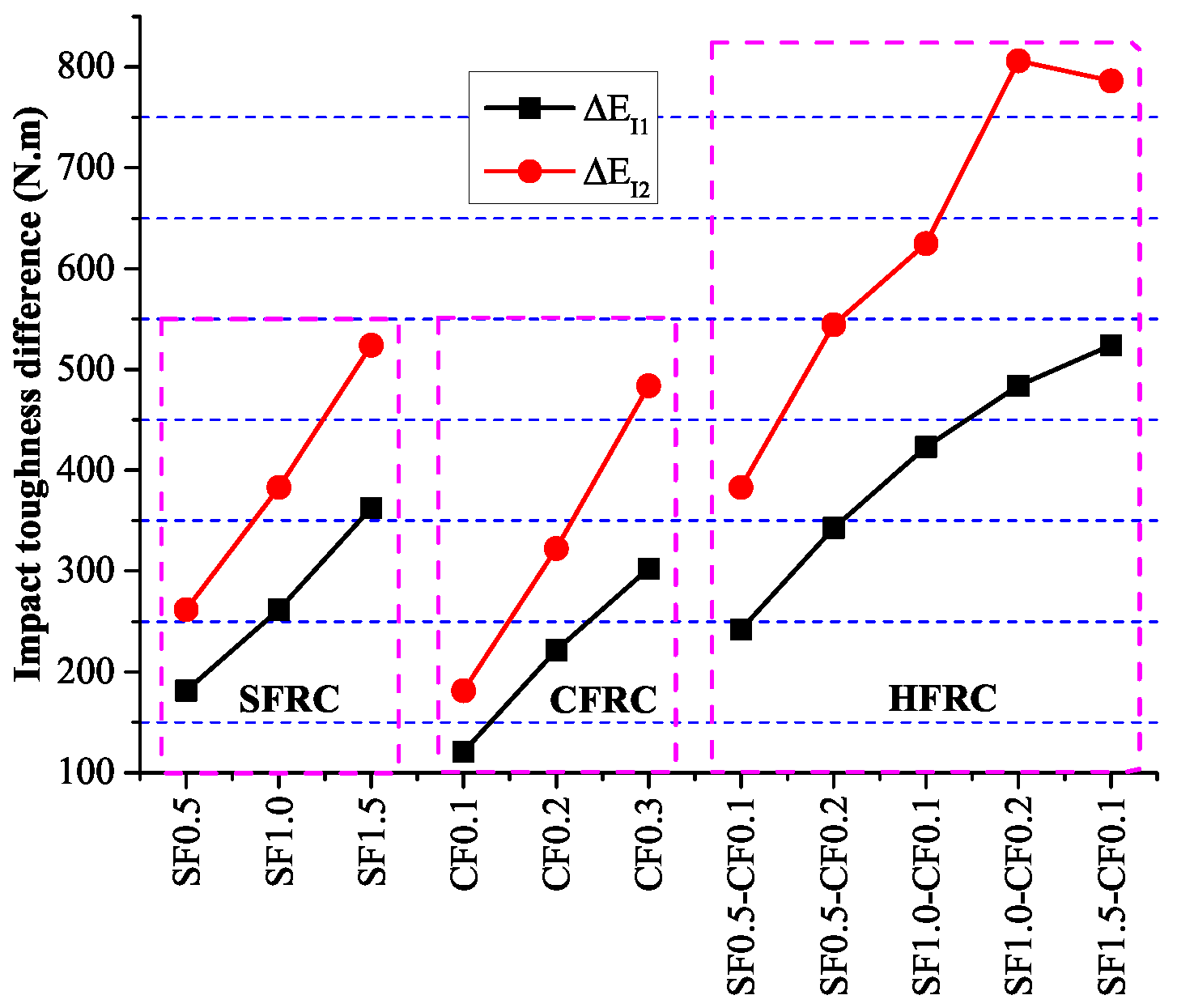
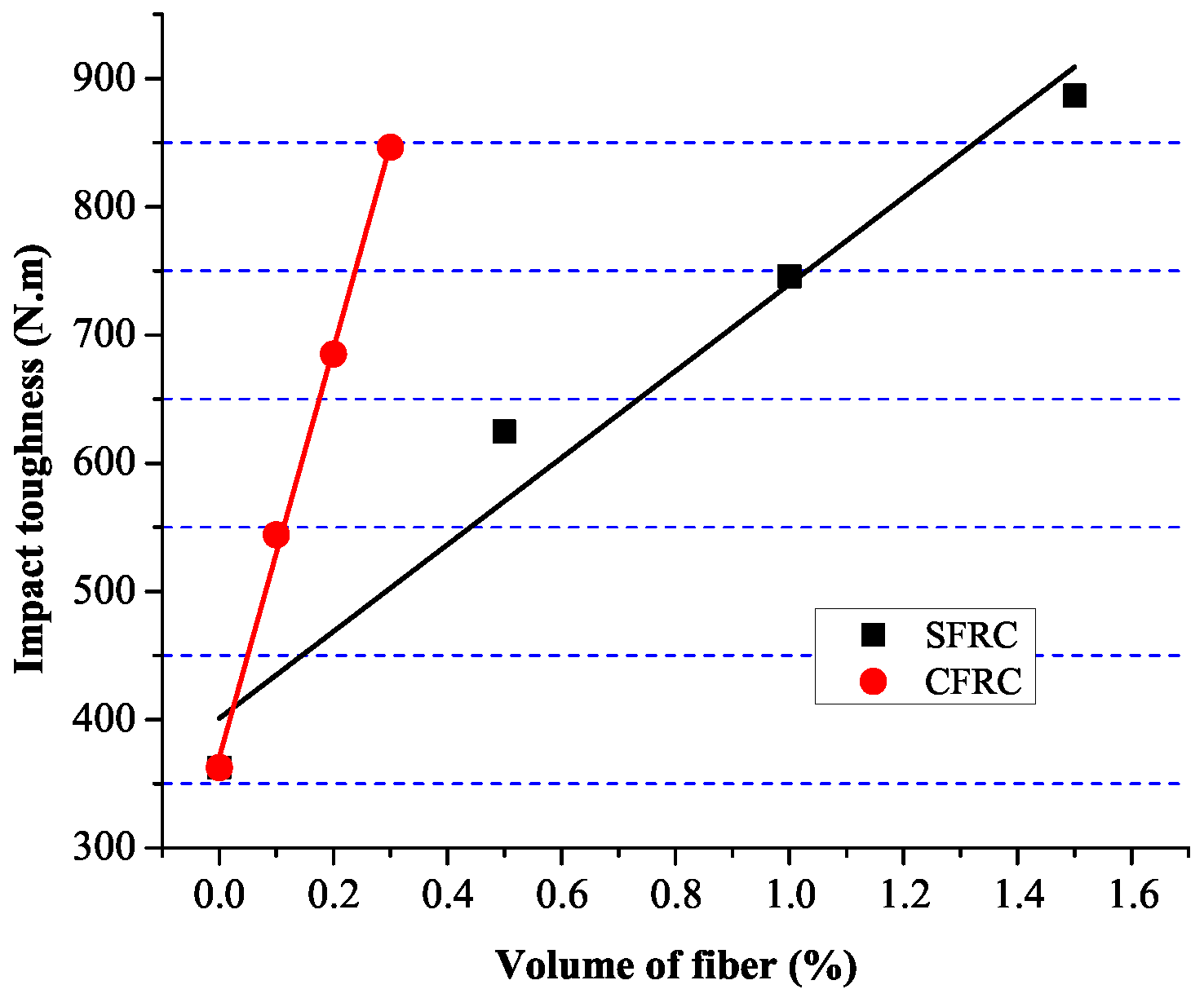
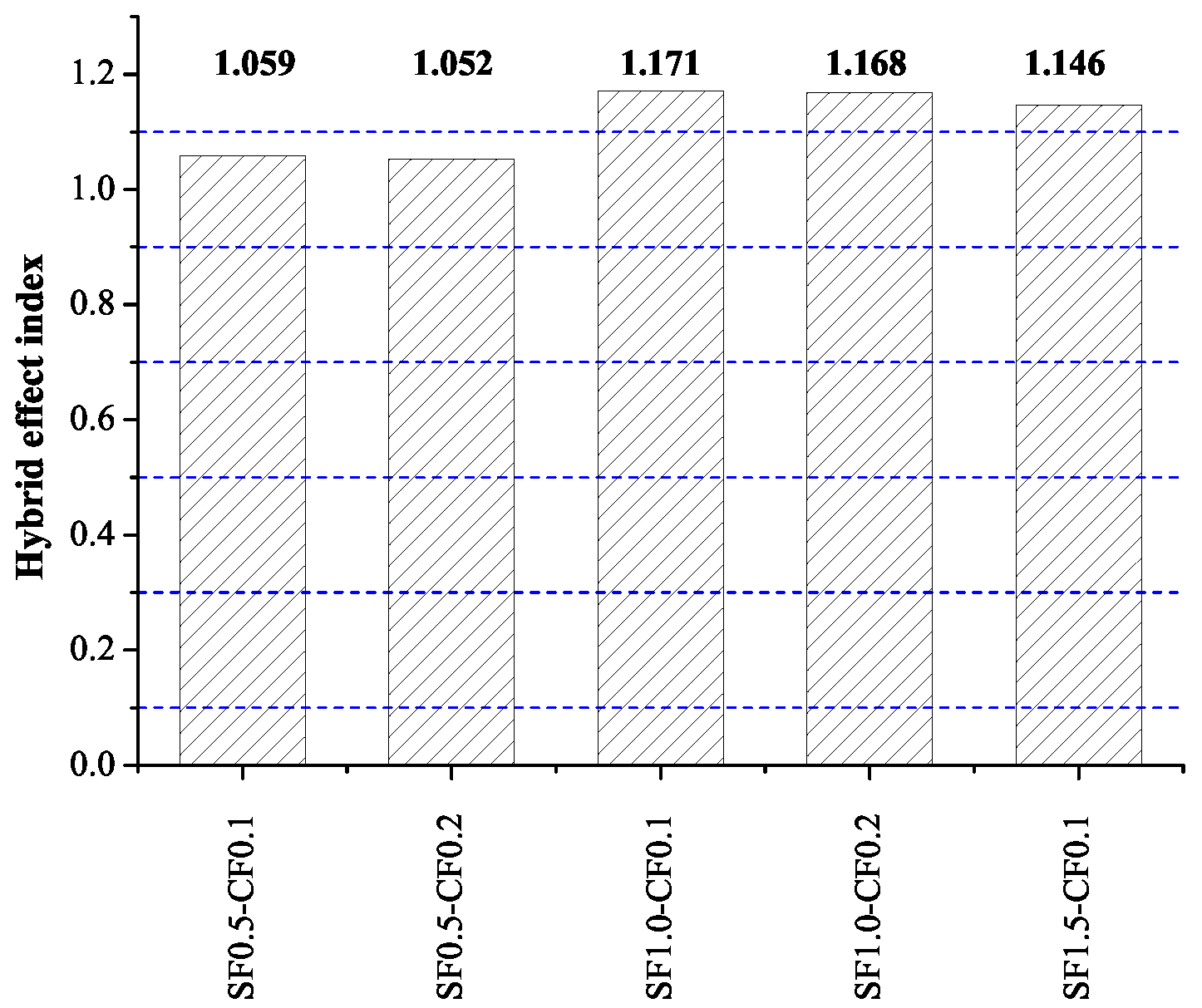
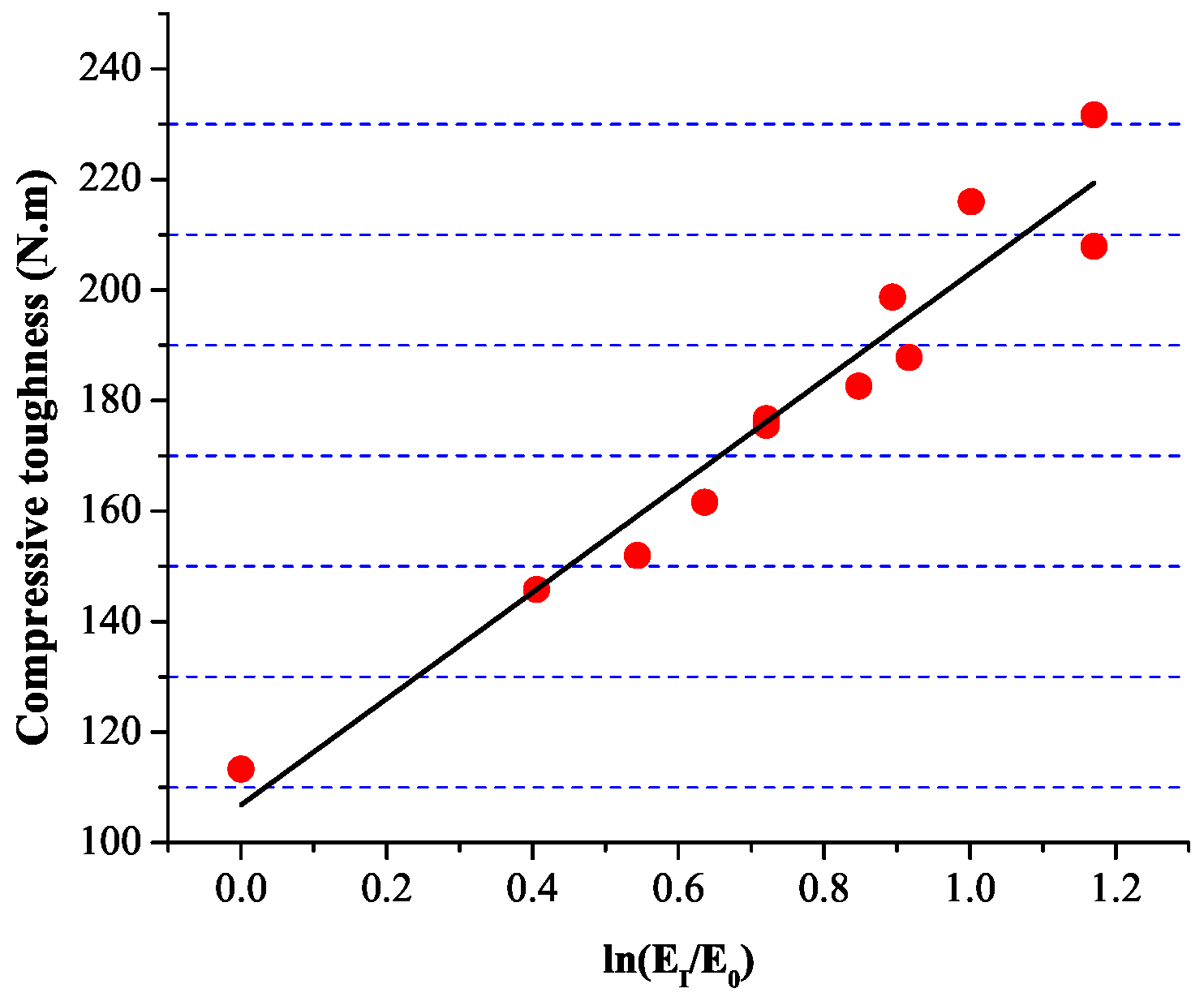
| Components | Cement | Fly Ash |
|---|---|---|
| (%) | 21.38 | 50.15 |
| (%) | 5.63 | 30.51 |
| (%) | 3.56 | 2.08 |
| (%) | 63.72 | 12.5 |
| (%) | 2.15 | 0.088 |
| (%) | 1.75 | 0.4 |
| (%) | 1.02 | 1.32 |
| LOI (%) | 0.79 | 1.13 |
| Total (%) | 100 | 98.2 |
| Fiber | Density (g/cm) | Length (mm) | Elastic Modulus (GPa) | Tensile Strength (MPa) |
|---|---|---|---|---|
| SF | 7.9 | 18 | 200 | 1150 |
| CF | 1.83 | 10 | 276 | 3000 |
| No. | C (kg) | FA (kg) | W (kg) | S (kg) | G (kg) | Sp (kg) | SF (kg) | CF (kg) | Slump (mm) |
|---|---|---|---|---|---|---|---|---|---|
| NC | 370 | 50 | 192 | 767 | 1071 | 4.2 | – | – | 165 |
| SF0.5 | 370 | 50 | 192 | 767 | 1071 | 4.2 | 40 | – | 153 |
| SF1.0 | 370 | 50 | 192 | 767 | 1071 | 4.2 | 80 | – | 129 |
| SF1.5 | 370 | 50 | 192 | 767 | 1071 | 4.2 | 120 | – | 104 |
| CF0.1 | 370 | 50 | 192 | 767 | 1071 | 4.2 | – | 2 | 129 |
| CF0.2 | 370 | 50 | 192 | 767 | 1071 | 4.2 | – | 4 | 115 |
| CF0.3 | 370 | 50 | 192 | 767 | 1071 | 4.2 | – | 6 | 94 |
| SF0.5-CF0.1 | 370 | 50 | 192 | 767 | 1071 | 4.2 | 40 | 2 | 118 |
| SF0.5-CF0.2 | 370 | 50 | 192 | 767 | 1071 | 4.2 | 40 | 4 | 101 |
| SF1.0-CF0.1 | 370 | 50 | 192 | 767 | 1071 | 4.2 | 80 | 2 | 98 |
| SF1.0-CF0.2 | 370 | 50 | 192 | 767 | 1071 | 4.2 | 80 | 4 | 94 |
| SF1.5-CF0.1 | 370 | 50 | 192 | 767 | 1071 | 4.2 | 120 | 2 | 86 |
© 2016 by the authors; licensee MDPI, Basel, Switzerland. This article is an open access article distributed under the terms and conditions of the Creative Commons Attribution (CC-BY) license (http://creativecommons.org/licenses/by/4.0/).
Share and Cite
Song, W.; Yin, J. Hybrid Effect Evaluation of Steel Fiber and Carbon Fiber on the Performance of the Fiber Reinforced Concrete. Materials 2016, 9, 704. https://doi.org/10.3390/ma9080704
Song W, Yin J. Hybrid Effect Evaluation of Steel Fiber and Carbon Fiber on the Performance of the Fiber Reinforced Concrete. Materials. 2016; 9(8):704. https://doi.org/10.3390/ma9080704
Chicago/Turabian StyleSong, Weimin, and Jian Yin. 2016. "Hybrid Effect Evaluation of Steel Fiber and Carbon Fiber on the Performance of the Fiber Reinforced Concrete" Materials 9, no. 8: 704. https://doi.org/10.3390/ma9080704
APA StyleSong, W., & Yin, J. (2016). Hybrid Effect Evaluation of Steel Fiber and Carbon Fiber on the Performance of the Fiber Reinforced Concrete. Materials, 9(8), 704. https://doi.org/10.3390/ma9080704







